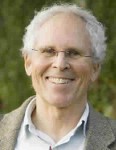Responding Locally to a Global Peril

Eight years ago this month, the Laguna Beach City Council received a plan to combat global warming from the former Environmental Committee. After some modifications, Council later voted unanimously to approve the document. At that time, 2009, our city was one among nearly 1,000 such U.S. municipalities adopting similar protocols to combat climate change. Laguna’s Climate Protection Action Plan (CPAP) aimed at lowering our city’s carbon emissions to 1990 levels by the year 2020.
Since 2009 City Hall has worked hard to make this happen by including key provisions of our plan in the land use element and design review criteria of the city general plan and directed the renamed Environmental Sustainability Committee to develop a sustainability element. Moreover, the city introduced energy saving appliances and strategies in its buildings, implemented traffic calming techniques, and built sidewalks and other walkways to reduce reliance on cars. (A complete report is available at the city’s website.)
The good news is that during the past eight years more cities across the United States have taken similar actions and researchers tell us that unlike earlier the vast majority of Americans now believe the Earth is warming and human activities are a major cause. Electric cars are coming onto the market especially in California, and the residential solar industry is growing fast.
The bad news is that the scientific community has found that warming is accelerating and only bold actions to reduce carbon emissions stand any chance of averting the worst consequences of climate change. Seas are rising, the polar ice sheets are melting, extreme weather is more common, and yet the new U.S. president is pledging to bring coal back and to repeal former President Barack Obama’s science-based initiatives to slow climate change. The Department of State, the Department of Energy, and the Environmental Protection Agency are or will soon be headed by former executives of the fossil fuel industry who have shabby records of addressing climate change.
To me this means that as the planet registers record heat little of consequence will be done about it at the federal level. While I and multitudes of others will apply as much pressure as possible on members of Congress and actively support candidates in 2018 who are committed to taking strong measures to limit warming, the fact remains that for the foreseeable future we’ll have to rely on cities and individuals to move on what many for good reason regard as the pivotal issue of our time.
San Diego, led by Republican Mayor Kevin Faulconer and not known for progressive politics, is seemingly the national leader among large municipalities in addressing climate change. Its website says, “. . . the City of San Diego’s Climate Action Plan calls for eliminating half of all greenhouse gas emissions in the City and aims for all electricity used in the city to be from renewable sources by 2035.” The plan adopted in 2005 was updated last year.
Given the good news, the bad news, and San Diego’s stellar example, perhaps the time has come for Laguna to update our 2009 CPAP. A sea-rise projection map for the decades ahead could be added. A call for more rooftop solar panels should be considered, for example on the Mission Hospital parking structure and elsewhere. Could more incentives be offered by the city to install such panels on homes and other buildings? Might the city’s website furnish information about steps residents can take to help implement an updated CPAP? Others may think of better, more effective steps. To gain a sense of what kind of world our children and grandchildren will inherit if we do nothing please consult the website of the National Academy of Sciences and read online Characterizing Risk In Climate Change Assessments.
Tom Osborne chaired the work group that wrote Laguna’s Climate Protection Action Plan in 2009.




